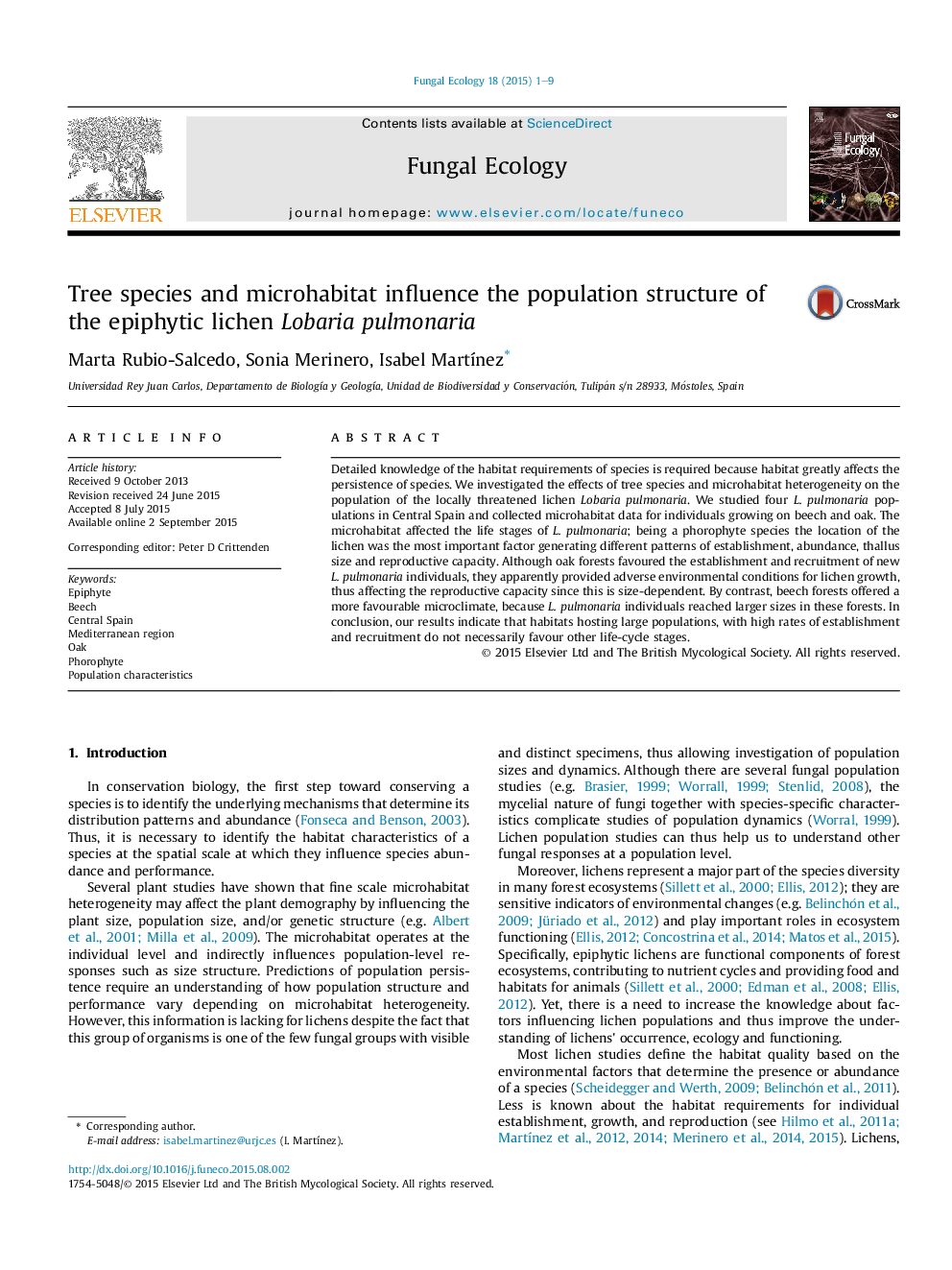| Article ID | Journal | Published Year | Pages | File Type |
|---|---|---|---|---|
| 8384530 | Fungal Ecology | 2015 | 9 Pages |
Abstract
Detailed knowledge of the habitat requirements of species is required because habitat greatly affects the persistence of species. We investigated the effects of tree species and microhabitat heterogeneity on the population of the locally threatened lichen Lobaria pulmonaria. We studied four L. pulmonaria populations in Central Spain and collected microhabitat data for individuals growing on beech and oak. The microhabitat affected the life stages of L. pulmonaria; being a phorophyte species the location of the lichen was the most important factor generating different patterns of establishment, abundance, thallus size and reproductive capacity. Although oak forests favoured the establishment and recruitment of new L. pulmonaria individuals, they apparently provided adverse environmental conditions for lichen growth, thus affecting the reproductive capacity since this is size-dependent. By contrast, beech forests offered a more favourable microclimate, because L. pulmonaria individuals reached larger sizes in these forests. In conclusion, our results indicate that habitats hosting large populations, with high rates of establishment and recruitment do not necessarily favour other life-cycle stages.
Related Topics
Life Sciences
Agricultural and Biological Sciences
Ecology, Evolution, Behavior and Systematics
Authors
Marta Rubio-Salcedo, Sonia Merinero, Isabel MartÃnez,
